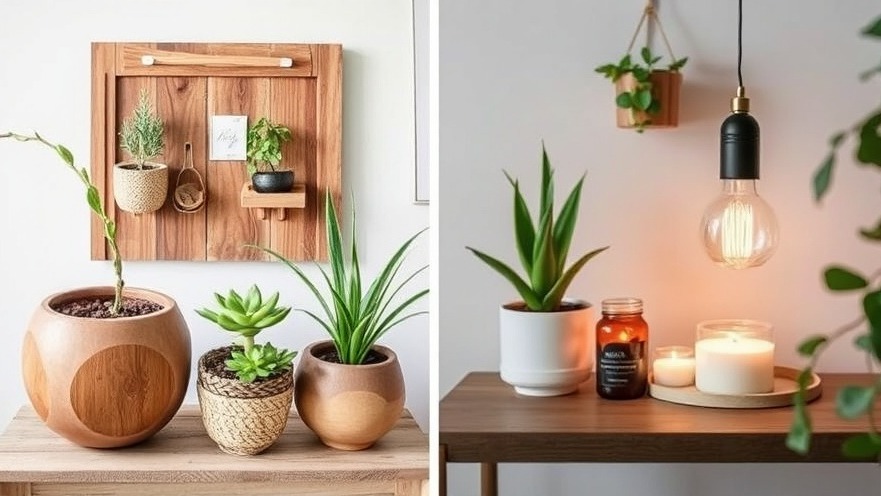
Transform Your Home: Eco-Friendly DIY Projects for Sustainable Living
In a world increasingly concerned about climate change, adopting sustainable practices at home is more vital than ever. You’re not alone if recent global events inspire you to make an impact through practical actions like reducing single-use plastics, carrying reusable bags, and shrinking your carbon footprint. With modern technologies at our fingertips, homeowners now have more options than ever to balance a stylish living space with environmental stewardship.
Rethink, Repurpose: The New Sustainability Mantra
The iconic ’90s slogan, "Reduce, Reuse, Recycle," serves as an ideal mantra for today’s eco-conscious DIY projects. By reusing household items, you not only minimize waste but also breathe new life into materials that would otherwise fill landfills. This approach can limit dust pollution from demolition and reduce the demand for new products, often loaded with harmful chemicals.
Projects such as reframing an old bathroom vanity, resurfacing hardwood floors, or giving a chic facelift to outdated bathroom tiles illustrate how reuse can be both cost-effective and impactful. Not only do these practices foster a greener environment, but they also add unique character to your home.
Choosing Sustainable Materials: The Eco-Conscious Home
When reusing materials isn’t viable, sourcing sustainably is essential. Options like bamboo and cork flooring are excellent choices due to their rapid regrowth and lower environmental impacts. Home improvement materials can often off-gas volatile organic compounds (VOCs), which degrade indoor air quality. Opting for products that are formaldehyde-free and low in VOCs contributes significantly to healthier home environments.
Many manufacturers today offer eco-friendly paints and finishes, ensuring that your projects contribute to both aesthetic appeal and sustainability. Investing time in identifying these resources translates into tangible benefits for your family’s health and the planet.
Eco-Friendly Landscaping: Enhancing Nature
A beautiful yard does more than just elevate curb appeal—it actively contributes to environmental health. Eco-friendly landscaping focuses on native plants, which often require less water and maintenance. Strategies include utilizing solar-powered lighting, reducing chemical pesticides, and using rain gardens to manage runoff. These not only beautify your home but play a crucial role in supporting local ecosystems.
Upgrade Your Appliances: Energy Efficiency Matters
Outdated appliances are not only unsightly but also costly due to inefficient energy usage. According to the EPA, modern appliances can use up to 75% less water and 25% less energy than models from two decades ago. Upgrading to energy-efficient appliances is a crucial step towards sustainability, drastically lowering both your utility bills and carbon footprint. Consider investing in appliances with ENERGY STAR certification, which highlights their efficiency.
Five Practical Eco-Friendly DIY Ideas to Get You Started
As you kick off your eco-friendly renovations, consider these five actionable projects:
Upcycle Old Furniture: Redesign an old dresser into a unique bookshelf or paint mismatched chairs for a cohesive look.
Install a Rainwater Collection System: Capture rainwater for garden irrigation, reducing your dependency on municipal water.
Create a Compost Bin: Turn kitchen scraps and yard waste into nutrient-rich compost for gardening.
DIY Insulate Your Home: Use recycled textiles for door drafts to enhance insulation and reduce energy costs.
Garden with Native Plants: Establish a local garden that attracts pollinators and minimizes water usage.
These projects encourage creativity and resourcefulness, proving that eco-friendly remodeling can be both fun and fulfilling!
Conclusion: The Power of Sustainable Choices
Taking steps to make your home greener doesn’t just help the environment; it can also enhance your lifestyle. Each small effort can lead to more significant positive impacts—on your wallet, health, and the planet. Get ready to embrace a lifestyle that honors both your home’s beauty and its place in the ecosystem.
If you're ready to make a change, now is the perfect time to start! Begin your journey towards sustainability with these DIY projects that not only beautify your living space but also contribute positively to the environment.
 Add Row
Add Row  Add
Add 



Write A Comment